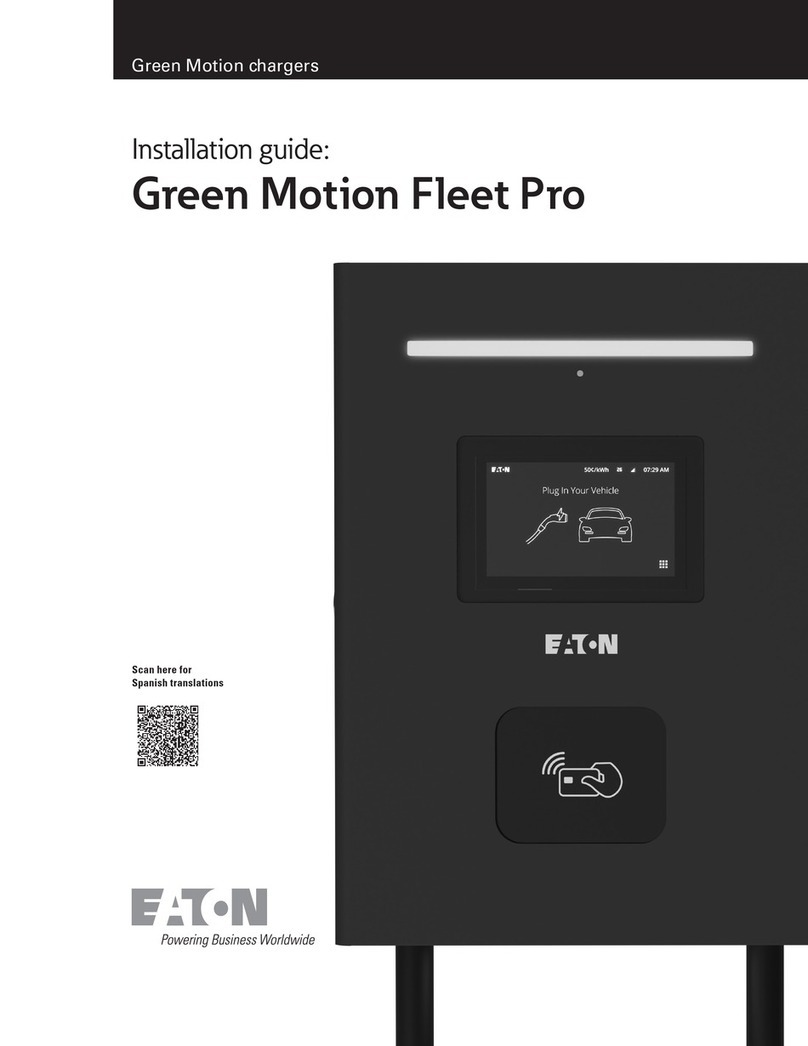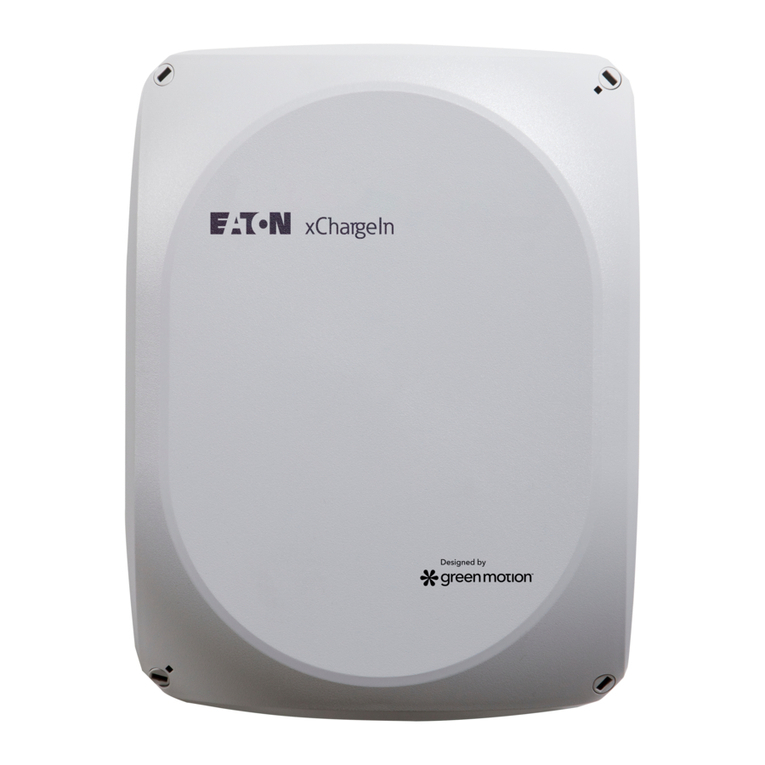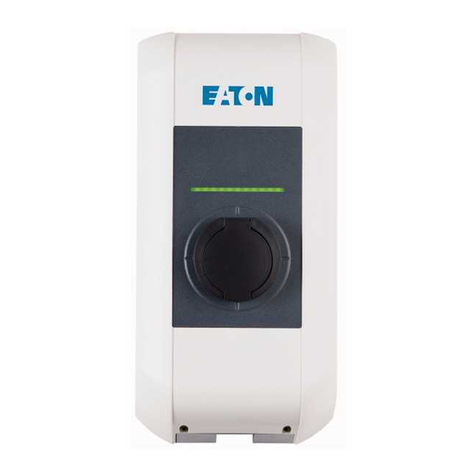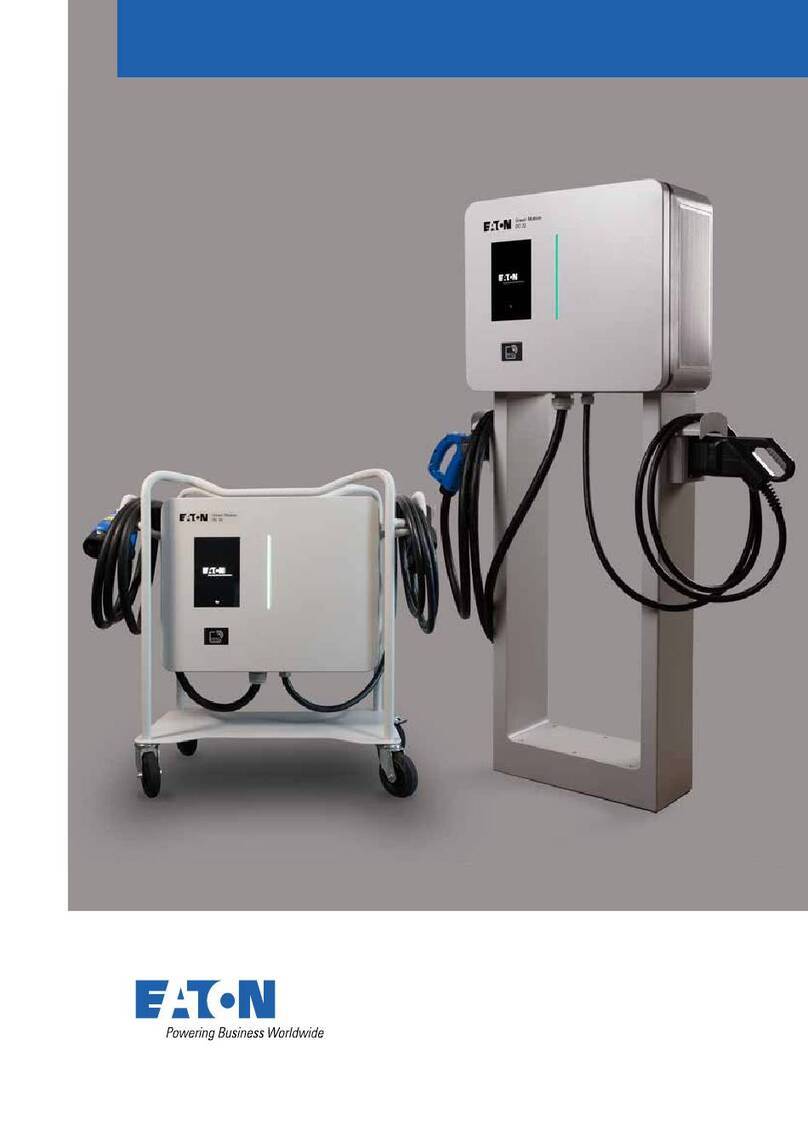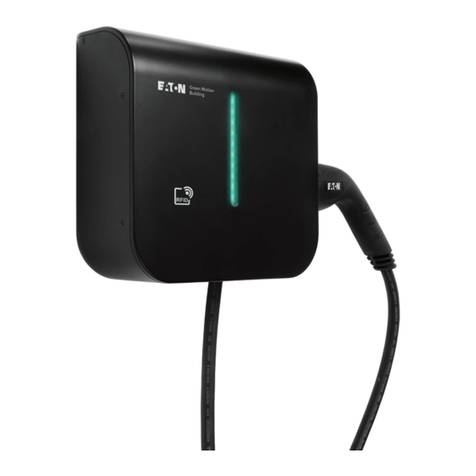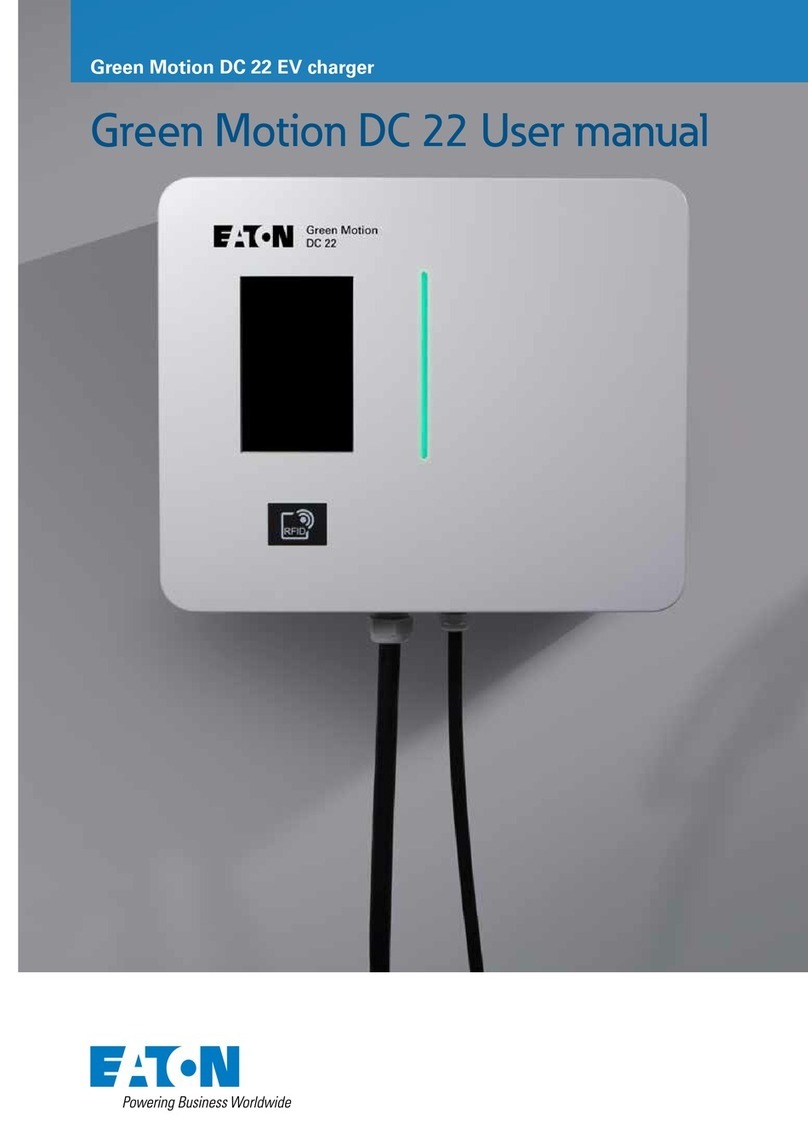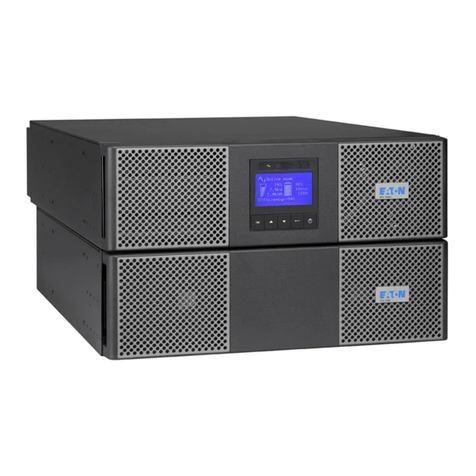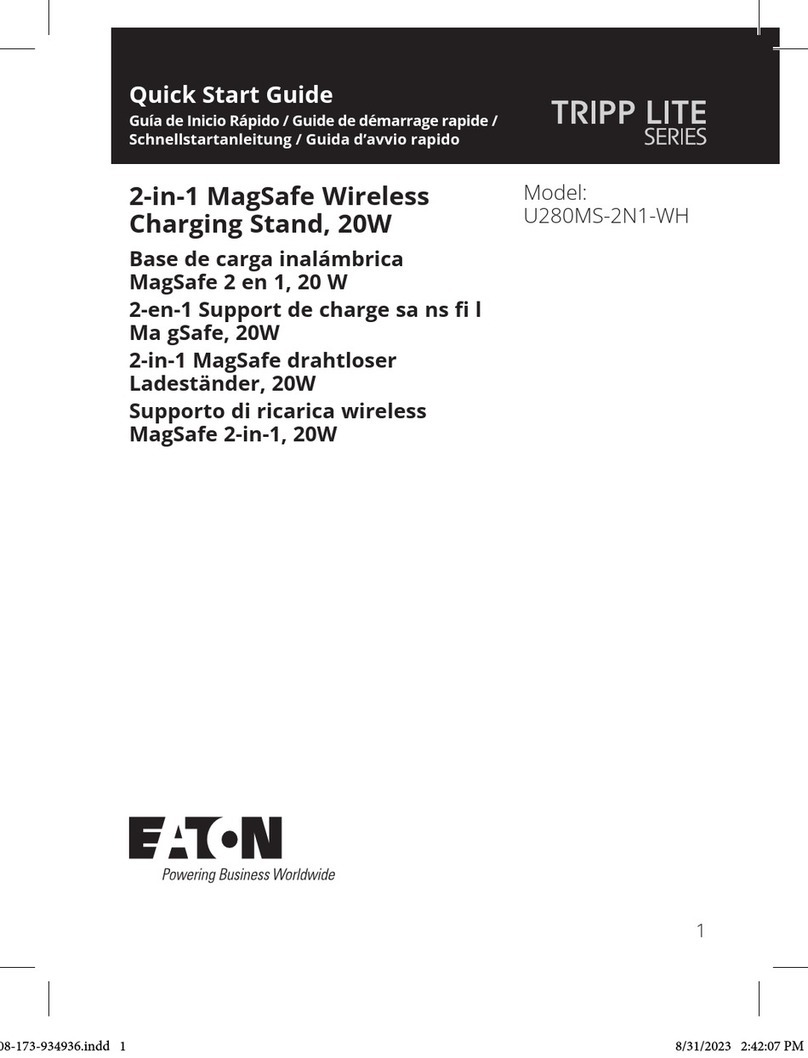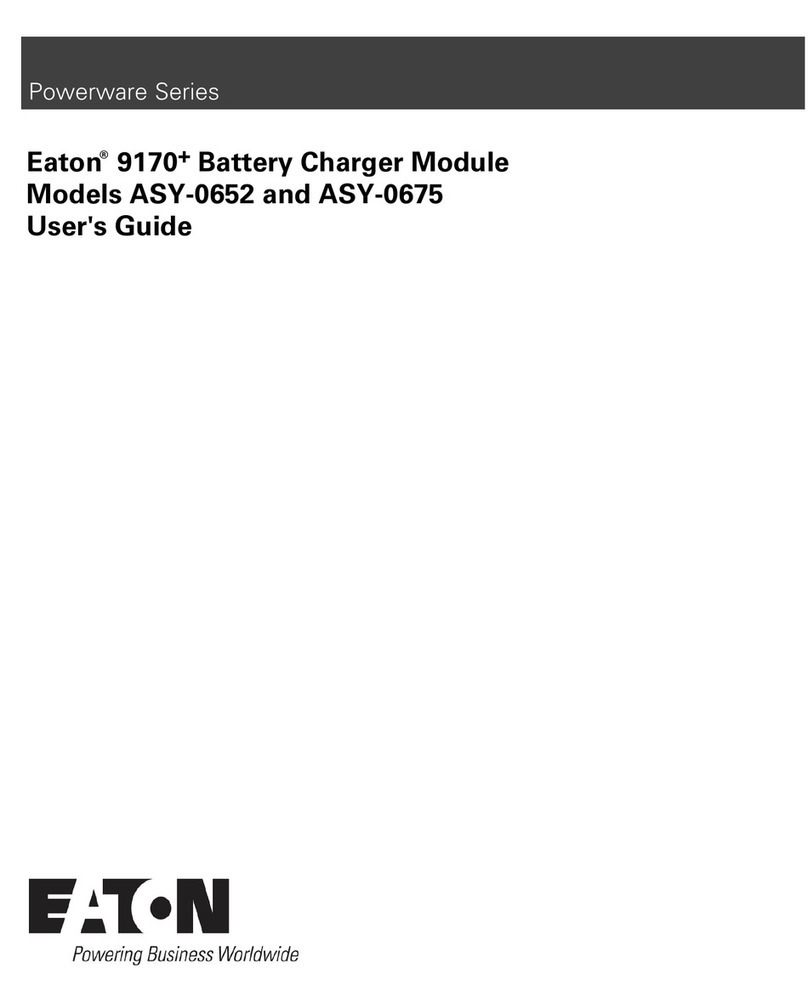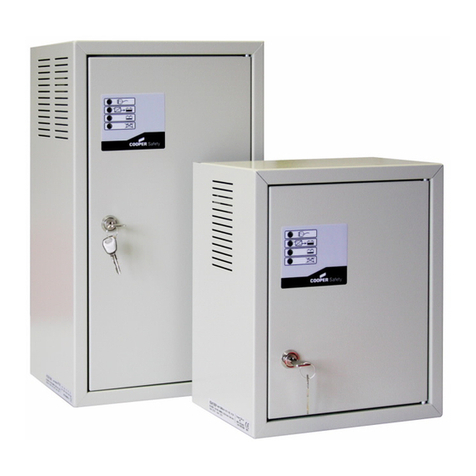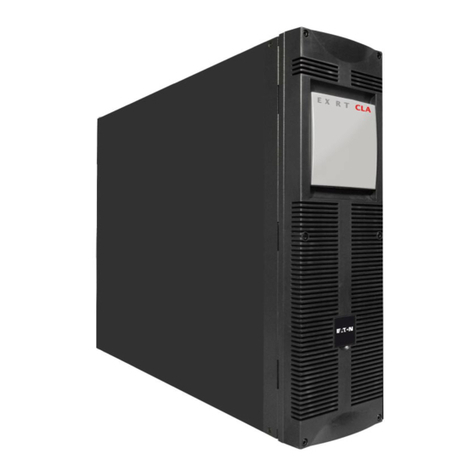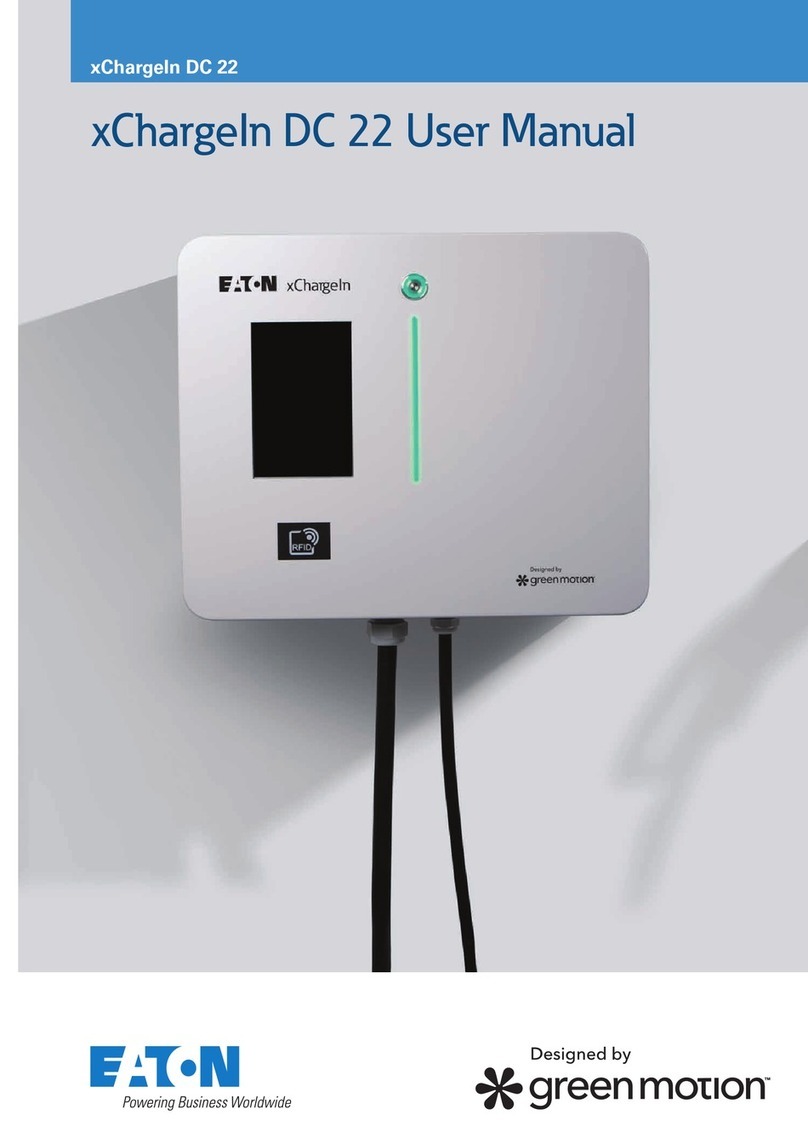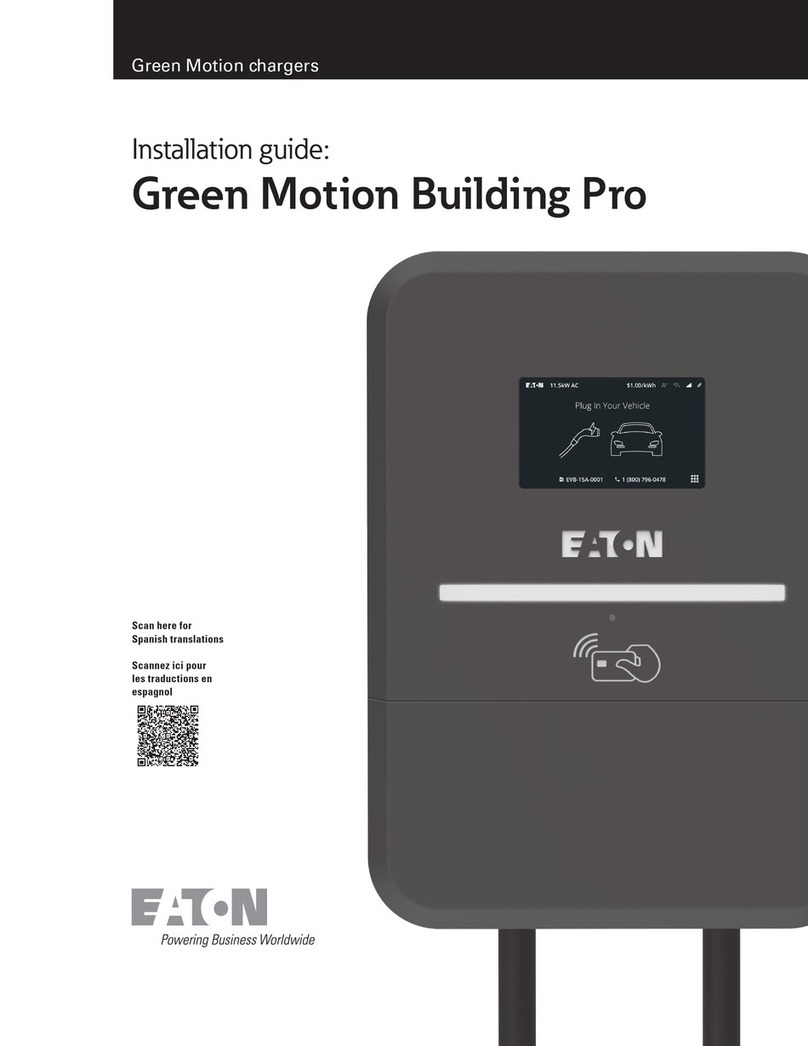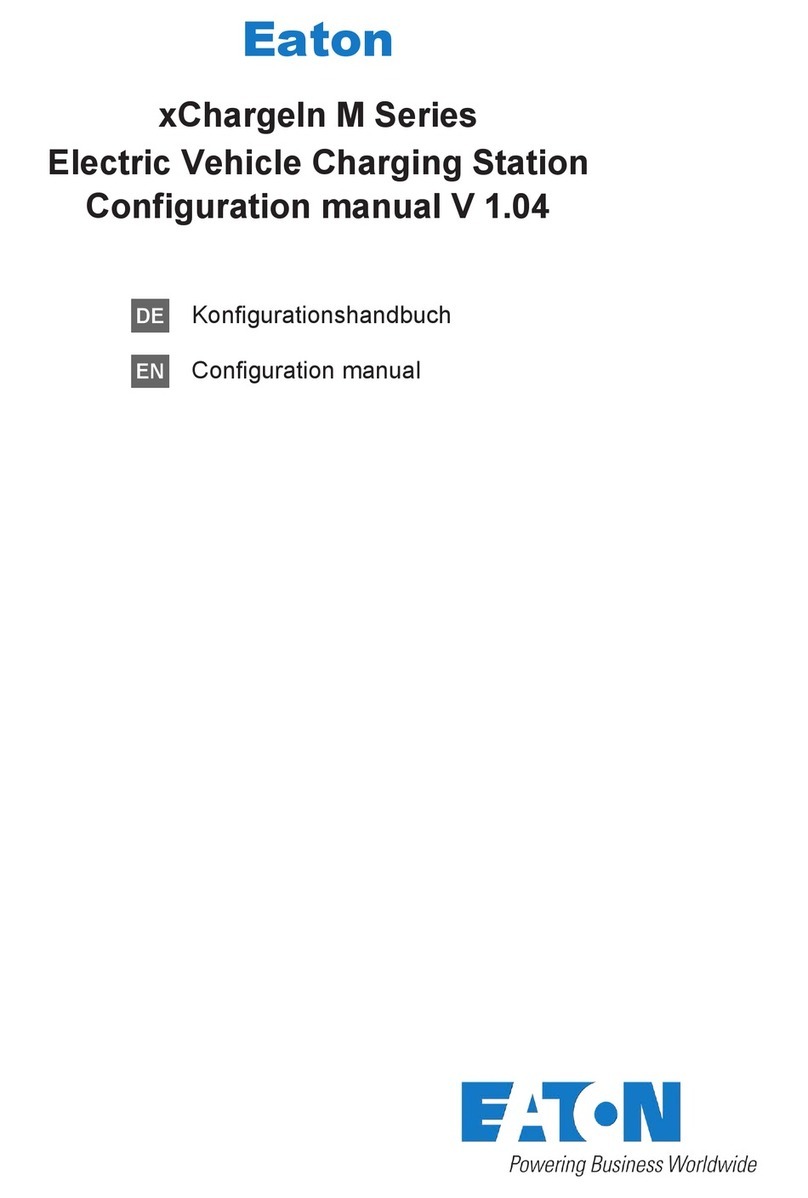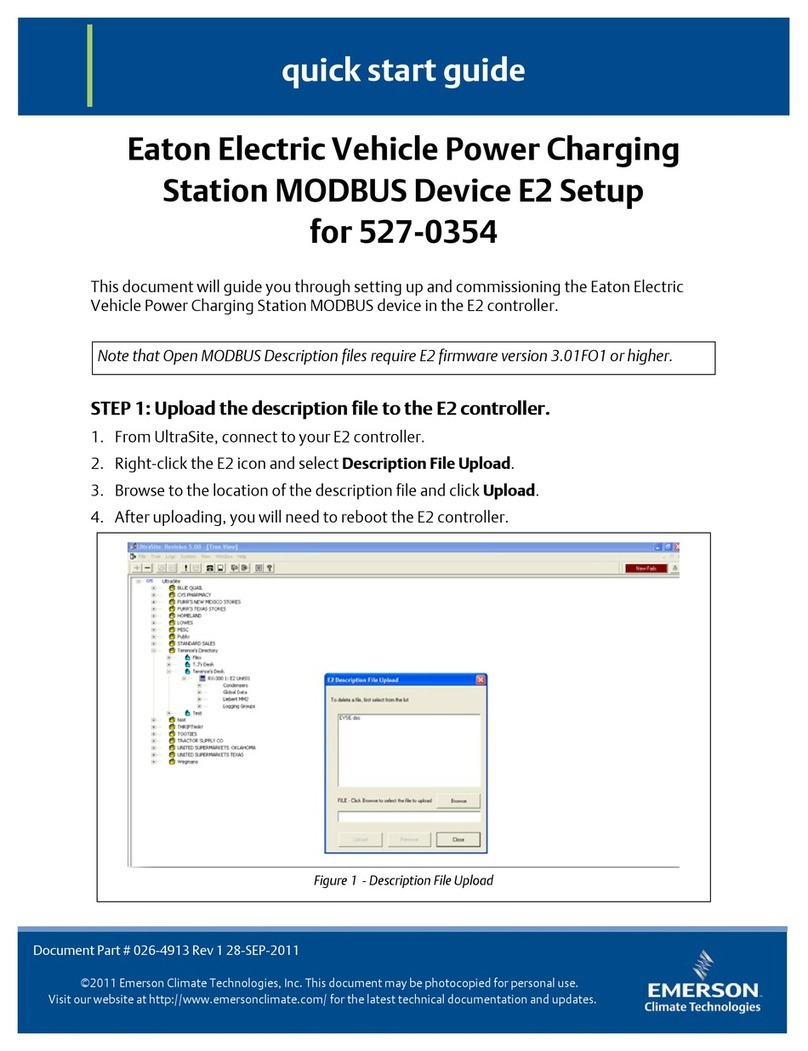
EATON xChargeIn FAQs commissioning and service technicians
EATON xChargeIn, FAQs commissioning v2.20 5
© EATON 2018
2.7 How is the connection cable inserted into the EATON xChargeIn?
If the feed line is run on the surface, a cable insertion from above is provided for. If the
installation is done with flush mounting, the cable is inserted from the rear into the EATON
xChargeIn. Please observe the information in the installation manual in the "Connecting the
power supply lines" chapter.
A cable feedthrough from below is not allowed!
2.8 What is the purpose of the enable input "IN" (X1)?
The enable input is intended for use with an external potential-free contact. Using the enable
input, it is possible to control the charging station using external components (e.g. external
key switches, ripple control receiver of the energy supplier, house control, time switches,
combination lock, photovoltaic system etc.).
The configuration of the enable input occurs via the DIP switches in the terminal panel. With
active enable input, charging is only possible if the enable contact is closed.
2.9 What is the purpose of the switch contact "OUT" (X2)?
The switch contact X2 "OUT" is a potential-free signal contact with which an upstream safety
device (e.g. circuit breaker or residual current device) can be switched off in the event of a
unit fault (contactor contacts welded). For instance, this is a requirement for Renault Z.E.-
Ready-compliant installations. Over this relay contact only safety extra-low-voltage <50VAC
(0.5A) may be switched. For further information including a connection example please refer
to the installation manual in chapter “Switch contact output X2”.
The configuration of the signal contact occurs via the DIP switches in the terminal panel.
2.10 How is the Ethernet cabling done in the terminal panel (for versions with Ethrnet
communication)?
The EATON xChargeIn in versions with Ethernet communication (S-series) have two
Ethernet connections, one LSA+ connection terminal and an RJ45 socket. Hardwired
Ethernet cabling on-site has to be done to the LSA+ connection terminal. The RJ45 socket is
merely an interface for debugging functions and for software updates.
3 Commissioning
You can find general information on commissioning in the installation manual in the
"Commissioning" chapter.
3.1 Where can I find the technical data for the EATON xChargeIn?
You can find the technical data for the EATON xChargeIn in the installation manual in the
"Technical data" chapter.
3.2 How do I test the EATON xChargeIn after installation?
The charging station can be placed into a commissioning mode for supporting the initial
system test. During this, a self test of the device is performed (interlocking, contactor
activation, current measurement, etc.) and the result is displayed. You can find more detailed
information in the installation manual in the "Commissioning mode/self test" chapter.
3.3 Can I connect the EATON xChargeIn to a home network?
EATON xChargeIn S-series variants can be connected to a home network.

